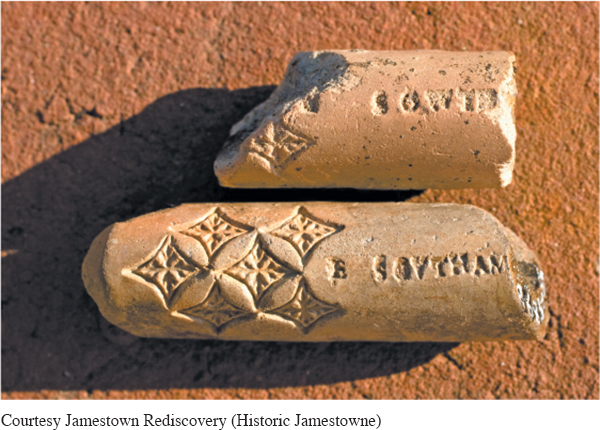Tobacco Fuels Growth in Virginia
It was not military aggression, however, but the discovery of a viable cash crop that saved the colony. Orinoco tobacco, grown in the West Indies and South America, sold well in England and Europe. Virginia colonist John Rolfe began to experiment with its growth in 1612, just as the drought lifted. Production of the leaf soared as eager investors poured seeds, supplies, and labor into Jamestown. Exports multiplied rapidly, from 2,000 pounds in 1615 to 40,000 pounds five years later and an incredible 1.5 million pounds by 1629.

Tobacco cultivation exacerbated tensions between the English and the Indians. As production increased and prices declined, farmers could increase their profits only by obtaining more land and more laborers. The Virginia Company sought to expand the region under cultivation by offering those who could pay their own way land for themselves and their families. Those who could not afford passage could sign an indenture, agreeing to labor for landowners for seven years. They would then gain their independence and perhaps land of their own. Yet in most cases, the land the Virginia Company offered would-be colonists was already settled by members of the Powhatan Confederacy. Thus the rapid increase in tobacco cultivation intensified competition between colonists and Indians.

Nonetheless, Powhatan tried one last time to create an alliance between his confederacy and the English settlers. Perhaps he was encouraged by the return of rain, assuming that increased productivity would ensure better trade relations with the English. In 1614 he agreed to allow his daughter Pocahontas to marry John Rolfe. Pocahontas converted to Christianity and two years later traveled to England with Rolfe and their infant son. While there, she fell ill and died in 1617. Rolfe returned to Virginia just as relations with the Powhatan Confederacy began to change. In 1618 Powhatan died, and his younger brother Opechancanough took over as chief.
In 1619, the Virginia Company granted colonists the right to establish a local governing body, the House of Burgesses. Its members could make laws and levy taxes, although the English governor or the company council in London held veto power. The Virginia Company also resolved to recruit more female settlers as a way to increase the colony’s population. More young women and men arrived as indentured servants, working in the fields and homes of more affluent Englishmen for a set period of time in exchange for passage to America. A Dutch ship carried the first boatload of twenty Africans to Jamestown that same year, and they were bound as indentured servants to farmers desperate for labor.
Although the English colony still hugged the Atlantic coast, its expansion increased conflict with native inhabitants. In March 1622, after repeated English incursions on land cleared and farmed by Indians, Chief Opechancanough and his allies launched a surprise attack that killed nearly a third of the colonists. In retaliation, Englishmen assaulted native villages, killed inhabitants, burned cornfields, and sold captives into slavery.
The English proclaimed victory in 1623, but hostilities continued for nearly a decade. In 1624, in the midst of the crisis, King James annulled the Virginia Company charter and took control of the colony. He appointed the governor and a small advisory council, required that legislation passed by the House of Burgesses be ratified by the Privy Council, and demanded that property owners pay taxes to support the Church of England. These regulations became the model for royal colonies throughout North America.
Still, royal proclamations could not halt Indian opposition. In 1644 Opechancanough launched a second uprising against the English, killing hundreds of colonists. After two years of bitter warfare, Chief Opechancanough was finally captured and then killed. With the English population now too large to eradicate, the Chesapeake Indians finally submitted to English authority in 1646.
Exploring American HistoriesPrinted Page 48
Exploring American Histories Value EditionPrinted Page 37
Chapter Timeline